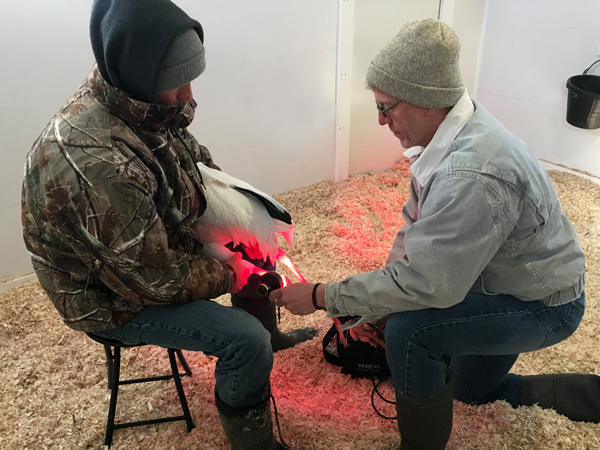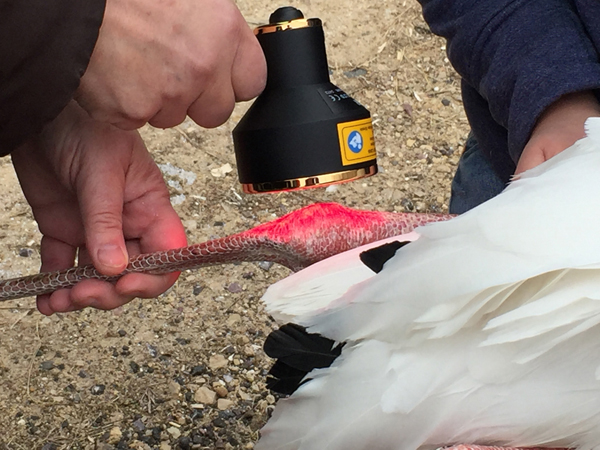
The International Crane Foundation supports a full-time veterinary team and comprehensive health care program for our captive crane population. We have made advancements in the areas of animal husbandry and avian veterinary medicine, and in turn contributed to longer lifespans among captive cranes, here and elsewhere. With increases in age come more geriatric medical conditions, including osteoarthritis, cancer and cardiovascular disease. The most common of these issues in our captive crane population is osteoarthritis – affecting 10% of our current flock – which unfortunately has no cure.
Recent research in the area of low-level light therapy has shown excellent results in treating chronic pain with no known side effects. Lower energy laser or light-emitting diode (LED) sources can be applied to the affected tissue and promote changes at the cellular level, providing stimulation to support tissue healing and decrease pain. The biggest limitation to this alternative therapy is the depth of tissue penetration by the electrical device. Fortunately, in crane species, targeted joints for pain modulation therapy are very superficial. As a result penetration by low-level light therapy easily reaches areas affected by osteoarthritis.

Click here to view a video of the treatment on Ranjit.
With the help of Scooter Software, Inc., our veterinary team was able to purchase a LED probe and power source from THOR Photomedicine, Ltd. We have started to use the device with Ranjit, a 32-year-old female Siberian Crane with advanced arthritis in her left leg. Initial results are encouraging; we hope they will be similar to last year’s first attempt with this technique in a Hooded Crane named Belmont. We plan to expand our use to other cranes throughout 2018.
 Story submitted by Dr. Barry Hartup, Director of Conservation Medicine for the International Crane Foundation. Click here to learn more about the work at our Global Headquarters.
Story submitted by Dr. Barry Hartup, Director of Conservation Medicine for the International Crane Foundation. Click here to learn more about the work at our Global Headquarters.
